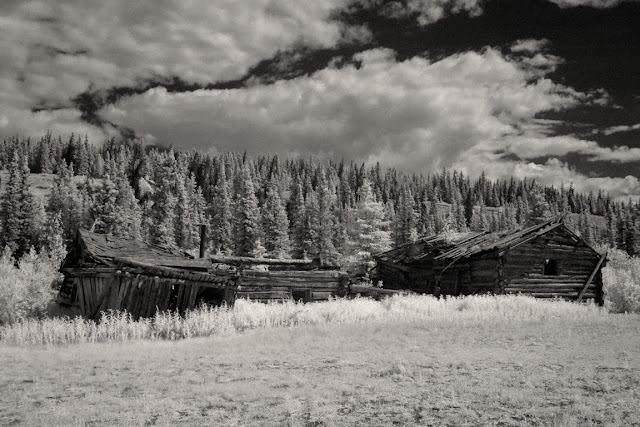Kluane Lake is the largest lake in the Yukon, and is close to 40 miles long. It used to flow into the Pacific Ocean but just a few thousand years ago a glacier damned it's outlet. Over time the lake filled up until it eventually created another outlet, flowing north towards the Yukon River. The glacier receded but the flow of the lake has been permanently altered.
 On the southern shore of the lake, next to Destruction Bay, is a ghost town called Silver City. The Kluane Lake area was the site of a short-lived gold rush in the early 1900s. Dawson Charlie, one of the discoverers of gold in the Klondike, staked the first claim on 4th of July Creek in the summer of 1903. By the end of that year 2,000 claims had been made in the Kluane region.
On the southern shore of the lake, next to Destruction Bay, is a ghost town called Silver City. The Kluane Lake area was the site of a short-lived gold rush in the early 1900s. Dawson Charlie, one of the discoverers of gold in the Klondike, staked the first claim on 4th of July Creek in the summer of 1903. By the end of that year 2,000 claims had been made in the Kluane region. The North-West Mounted Police followed closely behind the prospectors, setting up summer camps in canvas tents on Ruby Creek, Bullion Creek and Pine Creek in 1904. A permanent detachment was established at the outlet of Silver Creek where a small community, called Kluane or Silver City had sprung up. The NWMP barracks, a district mining office and a post office were among the buildings in the new community.
The North-West Mounted Police followed closely behind the prospectors, setting up summer camps in canvas tents on Ruby Creek, Bullion Creek and Pine Creek in 1904. A permanent detachment was established at the outlet of Silver Creek where a small community, called Kluane or Silver City had sprung up. The NWMP barracks, a district mining office and a post office were among the buildings in the new community.Silver City was also notable because it was the end of the road from Whitehorse. Further travel required getting on a boat and using the rivers. This is the way it remained all the way up until 1942 when the Alaska Highway pushed the road the rest of the way to Alaska. When i first moved up to Alaska in 2001 this portion of the highway, which took all day to travel, was still dirt. Today the road is much improved, but there are still some gravel sections.
As far as Silver City, half a dozen large buildings remain scattered among the trees. A Bed and Breakfast operates nearby, and also an arctic studies research station.




